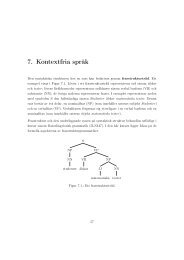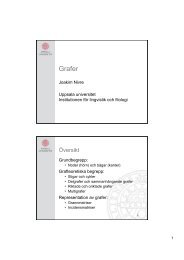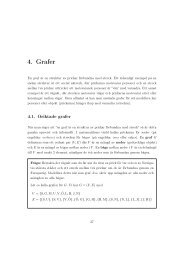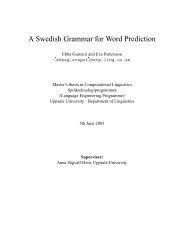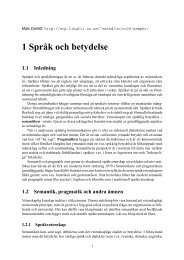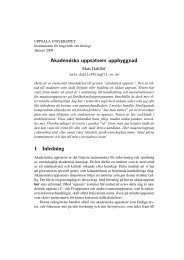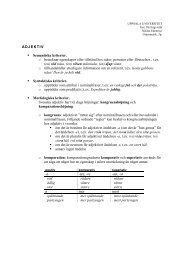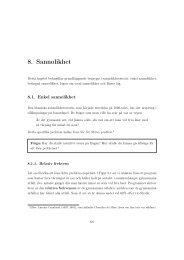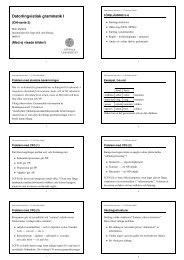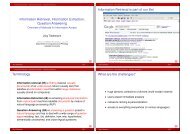Datorstödd inlärning av grammatik och språkteori - Stp
Datorstödd inlärning av grammatik och språkteori - Stp
Datorstödd inlärning av grammatik och språkteori - Stp
Create successful ePaper yourself
Turn your PDF publications into a flip-book with our unique Google optimized e-Paper software.
Abstract<br />
The purpose of this study is to expand an already existing, but not<br />
complete, grammar to handle Swedish Verb-Particle combinations. The<br />
term Swedish Verb-Particle is used to refer to verb phrases consisting of<br />
a simple verb followed by a verbal particle, as in slå upp (telefonnumret)<br />
‘look up (the phone number)’. The syntax of such verb phrases and the<br />
position of verbal particles in a main clause is described and their<br />
dependency structure is examined on the basis of an empirically based<br />
investigation. The main idea is to consider verbal particles as functions,<br />
rather than as parts of speech. I argue that, in syntactic dependency, the<br />
particle is dependent on the verb, unlike in semantic dependency where<br />
the particle is analyzed as a part of the verb to which it is attached.<br />
Theoretical and practical problems involved in implementing verbparticle<br />
combinations into a Swedish grammar model is discussed. The<br />
model used is based on Object-Oriented Programming, dependency<br />
grammar and unification, and is explained in some detail. This Swedish<br />
grammar model is part of the project "Computer-aided learning of<br />
grammar and language theory" at the University of Stockholm and is<br />
intended as an instrument for learning and understanding grammar and<br />
linguistic theory.<br />
ii




